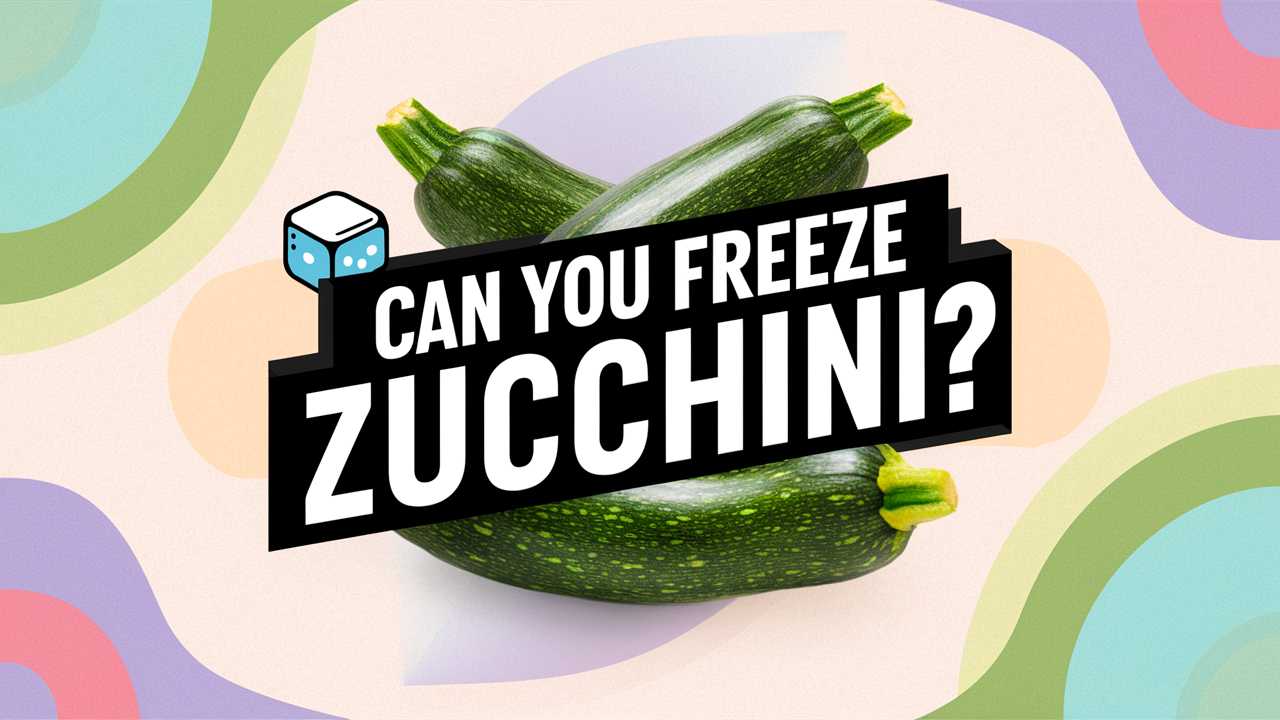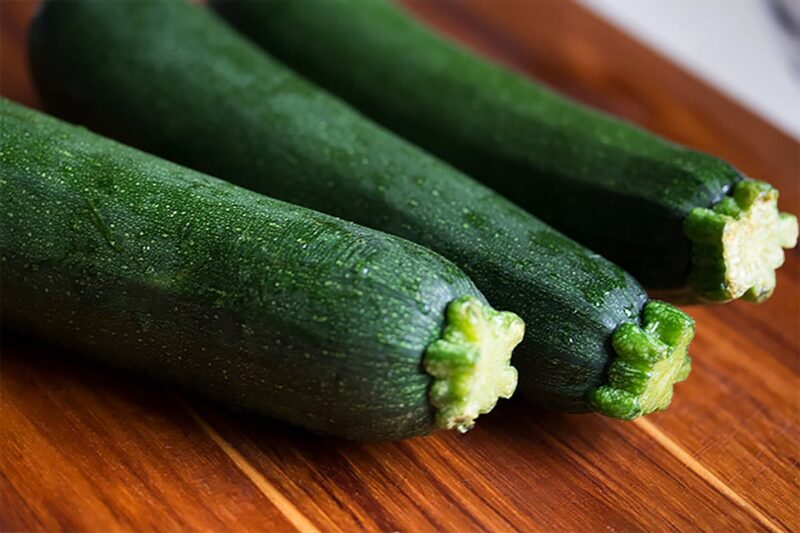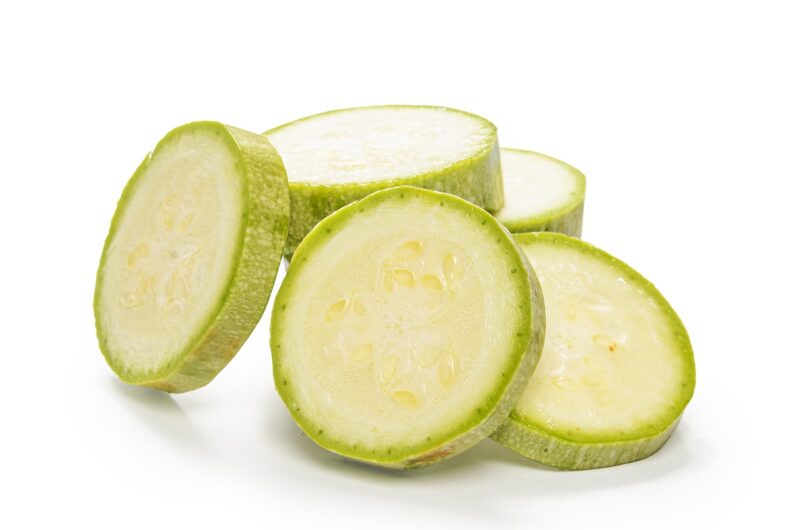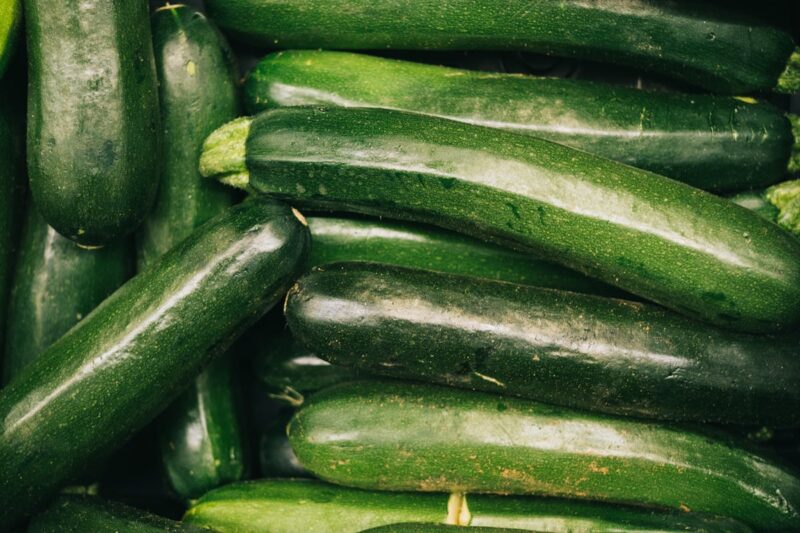Zucchini, a nutritious and versatile summer squash, finds its way into many kitchens, especially during peak harvest seasons. Its mild flavor and unique texture make it a favorite in an array of dishes, from savory stir-fries to sweet baked goods. As summer wanes and gardens overflow with this green goodness, many find themselves asking: can you freeze zucchini?
The answer is a resounding yes! But there’s so much more to explore in this subject. This comprehensive guide will cover freezing methods, preparation tips, storage advice, and creative ways to use frozen zucchini. Let’s embark on this culinary journey together.
How to Freeze Zucchini: Step-by-Step Instructions
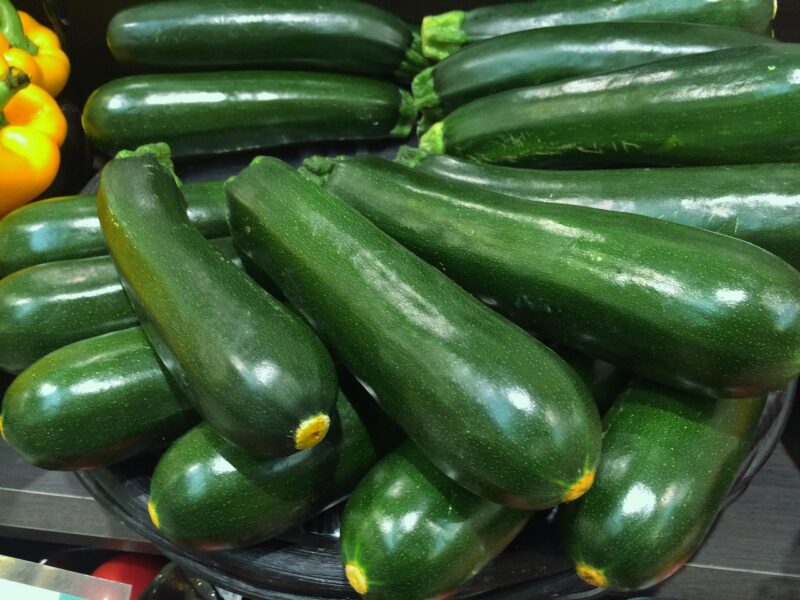
Freezing zucchini is a straightforward process, but following the proper steps can make a world of difference in maintaining quality. Here is a step-by-step guide to freezing zucchini effectively.
Step 1: Select and Prepare
Choose Fresh Zucchini: Look for firm zucchinis with no blemishes or soft spots. Younger zucchinis tend to be more flavorful and tender.
Wash Thoroughly: Rinse the zucchinis under cool water to remove any dirt or pesticides.
Step 2: Slice or Shred
You can freeze zucchini in several ways:
Slices for grilling or roasting
Shredded for baking or adding to soups
Cubed for stir-frying
Regardless of your choice, consistency is key. Try to keep slices or cubes uniform to ensure even freezing.
Step 3: Blanching (Optional)
Blanching is a fast process that can help preserve zucchini’s color, flavor, and nutritional value. Here’s how to do it:
Boil Water: Fill a pot with water and bring it to a rolling boil.
Prepare an Ice Bath: In a separate bowl, prepare ice water.
Blanch the Zucchini: Add your prepared zucchini to the boiling water. Blanch for about 2-3 minutes.
Transfer to Ice Bath: Quickly remove the zucchini and plunge it into the ice bath to stop the cooking process.
This step might feel tedious, but it pays off in the long run. Blanched zucchini retains its vibrant color and crispness when thawed.
Step 4: Drain and Dry
Once cooled, drain the zucchini thoroughly. Pat it dry with a clean kitchen towel. Excess moisture can lead to freezer burn, and we don’t want that.
Step 5: Packing for Freezing
Use Airtight Containers: Choose freezer bags or airtight containers to prevent air from entering.
Label and Date: Always label your containers with the contents and the date to track freshness. Frozen zucchini is best used within 10-12 months, although it may last longer.
Step 6: Freeze
Lay bags flat in the freezer to save space and allow for easier stacking. Keep in mind to not pack the bags too tightly; air needs to circulate for effective freezing.
Best Uses for Frozen Zucchini
So, you’ve successfully frozen zucchini—now what? Having frozen zucchini on hand opens a world of culinary possibilities. Here are some inspired ways to incorporate this vegetable into your meals.
1. Zucchini Bread and Muffins
One of the most beloved uses of frozen zucchini is in baked goods. It adds moisture and subtle flavor. Just remember to squeeze out excess liquid before adding it to your batter. Here’s a simple recipe for zucchini bread:
Ingredients:
1 cup shredded zucchini (thawed and drained)
2 cups all-purpose flour
1 cup sugar
1/2 cup vegetable oil
3 eggs
1 tsp vanilla extract
1 tsp baking soda
1/2 tsp baking powder
1/2 tsp salt
Optional: nuts or chocolate chips
Instructions:
Preheat the oven to 350°F (175°C).
In a mixing bowl, combine the sugar, eggs, and vegetable oil.
Stir in the shredded zucchini and vanilla extract.
In a separate bowl, mix the flour, baking soda, baking powder, and salt.
Gradually add the dry mixture to the wet ingredients until just combined. Fold in nuts or chocolate chips if desired.
Pour the batter into a greased loaf pan and bake for 60-70 minutes or until a toothpick comes out clean.
2. Zucchini Soups and Stews
Frozen zucchini can easily be added to soups or stews. You don’t have to thaw it; simply toss it into the pot during the last few minutes of cooking. It adds volume and nutrients without needing fresh produce.
3. Stir-Fries and Frittatas
Adding frozen zucchini to stir-fries is a quick way to enhance your meal. It pairs beautifully with other vegetables and proteins. Frittatas with frozen zucchini can be a great breakfast option, just remember to sauté it for a few minutes beforehand.
4. Smoothies
Frozen zucchini can be a surprising yet beneficial addition to smoothies. It blends seamlessly, adding creaminess without strong flavors. Toss a handful into your next green smoothie for added nutrients.
5. Riced Zucchini Dishes
If you’re looking for low-carb alternatives, frozen riced zucchini (zoodles) can stand in for traditional rice or pasta. Heat it up and serve with your favorite sauces or stir-fries.
The Differences Between Frozen and Fresh Zucchini
It’s natural to wonder how frozen zucchini measures up against fresh. While freezing is a great way to preserve its integrity, there are a few differences to note:
Texture
Frozen zucchini tends to lose some moisture and may become slightly softer compared to fresh zucchini. While this won’t impact baked goods or soups, it can be noticeable when you intend to grill or roast.
Flavor
Flavor typically remains intact, especially if you blanch the zucchini before freezing. However, fresh zucchini tastes best in salads or dishes where it is consumed raw.
Nutritional Value
Frozen zucchini retains most of its nutritional benefits, although some vitamins may decrease slightly during the freezing and blanching process. Overall, the health benefits remain significant.
Common Questions About Freezing Zucchini
Can You Freeze Zucchini Without Blanching?
Yes, you can freeze zucchini without blanching, but you might compromise on texture and flavor. If you choose this route, ensure the zucchini is sliced or shredded uniformly and packed tightly in airtight bags to limit air exposure.
How Long Can You Keep Frozen Zucchini?
Frozen zucchini maintains its best quality for about 10-12 months. While it may last longer in the freezer, using it within this timeframe is optimal for flavor and texture.
How Do You Thaw Frozen Zucchini?
Thawing options include placing the zucchini in the refrigerator overnight or using the microwave’s defrost setting. For soups or stir-fries, there’s no need to thaw first; simply add it straight from the freezer.
Understanding Zucchini: A Nutritional Powerhouse
Before we get into freezing methods, it’s worthwhile to appreciate what makes zucchini so special. This low-calorie vegetable is packed with vitamins A and C, potassium, and antioxidants. It absorbs flavors well, making it a perfect addition to numerous recipes.
A personal anecdote: I remember the first time I grew zucchini in my backyard. The plants exploded with produce, and I was graced with an abundance of zucchinis. It felt rewarding not just to grow them but also to find creative ways to use them in my meals. Knowing that freezing would allow me to savor this bounty long after the harvest made the whole experience even more enjoyable.
Nutritional Benefits of Zucchini
Low in Calories: A cup of raw zucchini contains around 20 calories, making it a great choice for weight management.
Rich in Antioxidants: Zucchini is loaded with lutein and zeaxanthin, which support eye health by reducing the risk of macular degeneration.
Boosts Hydration: Composed of about 95% water, zucchini can contribute to hydration, especially in hot summer months.
Understanding these benefits makes it clear why you’d want to preserve zucchini when it’s in season.
Creative Recipes to Enhance Flavor
To really enjoy the versatility of frozen zucchini, why not experiment with your recipes? Here are some creative ideas that can elevate your meals:
Zucchini Noodle Stir-Fry
Ingredients: Frozen zucchini noodles, mixed vegetables, tofu or chicken, soy sauce, ginger, garlic.
Instructions: In a hot skillet, sauté ginger and garlic, add your protein, then throw in the frozen zoodles and vegetables last. Stir to combine and infuse flavors.
Stuffed Zucchini Boats
Cut fresh zucchini in half lengthwise and scoop out seeds.
Mix cooked quinoa or rice with your choice of protein, diced tomatoes, and cheese.
Fill the halved zucchinis and bake until tender.
Zucchini Pizza Bites
Slice zucchini into rounds and sprinkle with salt.
Top with pizza sauce, cheese, and your favorite toppings.
Bake until cheese is melted and bubbly.
Conclusion: Embracing Zucchini Year-Round
The journey of freezing zucchini is one that opens the door to endless culinary possibilities. Whether you choose to whip up a loaf of zucchini bread, toss it into a hearty stew, or add it to a refreshing smoothie, having frozen zucchini at your disposal ensures that you can enjoy summer’s bounty all year long.


